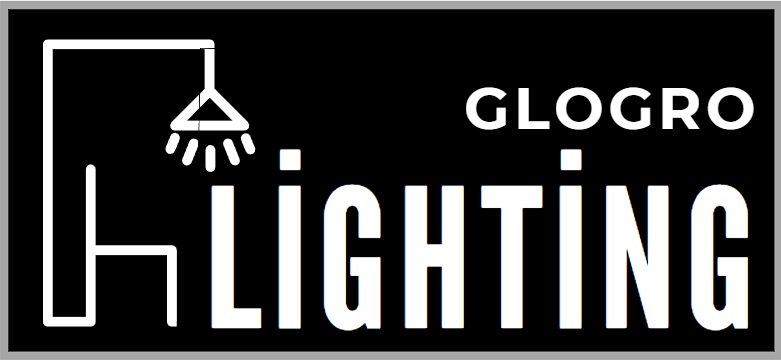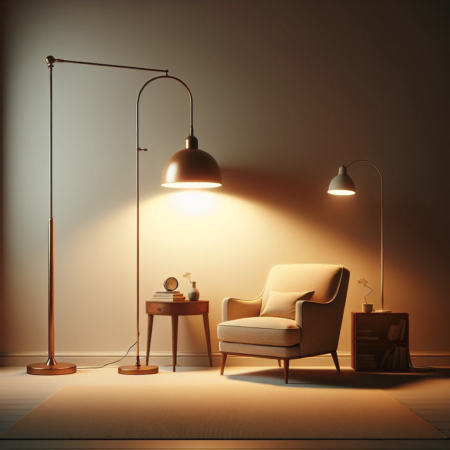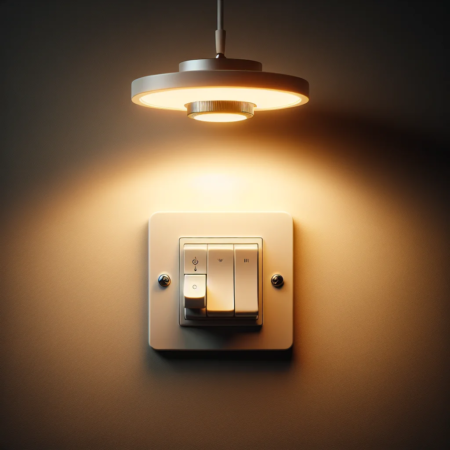Contents
The Lifespan of LED Ceiling Lights
LED ceiling lights are known for their exceptional longevity, providing users with extended use and minimal need for replacement. The lifespan of LED ceiling lights is influenced by several key factors, including power supply, ambient temperature, capacitors and drivers, and heat emission.
Power supply is critical as the quality and stability of the power source directly impact the durability of LED lights. The ambient temperature also plays a vital role, as excessive heat can significantly reduce the lifespan of LED ceiling lights.
Furthermore, the quality and efficiency of capacitors and drivers, as well as heat emission, contribute to the overall longevity of LED lights. These factors emphasize the significance of proper maintenance and operational conditions to maximize the lifespan of LED ceiling lights.
Factors Affecting Lifespan
Power supply stability is crucial for ensuring the prolonged performance of LED ceiling lights. A consistent and reliable power supply minimizes the risk of voltage fluctuations, which can have detrimental effects on LED longevity.
Additionally, the ambient temperature in which LED ceiling lights operate greatly influences their lifespan. High temperatures can accelerate the degradation of LED components, leading to a shorter operational life.
Moreover, the quality of capacitors and drivers in LED lights impacts their resilience, making it imperative to use high-quality components for optimal longevity. Heat emission, if not managed effectively, can also contribute to premature LED failure, highlighting the importance of adequate heat dissipation mechanisms.
By addressing these factors, users can enhance the durability and performance of their LED ceiling lights.
Average Lifespan of LED Ceiling Lights
In general, commercial LED ceiling lights boast an impressive average lifespan of up to 50,000 hours or more, demonstrating their outstanding longevity and cost-effectiveness. Some specialized LED lamps even offer an astounding theoretical lifespan of 22 years, making them an exceptional long-term lighting solution.
Furthermore, ensuring proper operating conditions, including stable power supply, controlled ambient temperature, and efficient heat dissipation, can extend the lifespan of LED ceiling lights beyond the average expectancy. This emphasizes the importance of conscientious maintenance and operational practices to maximize the value and longevity of LED lighting solutions.
The remarkable endurance of LED ceiling lights solidifies their status as a reliable and durable lighting option for various applications.
How Long Do LED Ceiling Lights Last?
LED ceiling lights typically last for 4 to 6 years. The actual lifespan depends on factors such as the quality of the product, usage patterns, and environmental conditions. Factors such as room temperatures, electrical voltage, and thermal management also play a significant role in determining the longevity of LED lighting.
Understanding the Lifespan
LED ceiling lights have a lifespan typically ranging from 4 to 6 years. However, the actual longevity depends on various factors, including the quality of the product, usage patterns, and environmental conditions.
Many LED chips can last up to 100,000 hours if operated correctly. Factors such as higher room temperatures, electrical voltage, and thermal management influence the lifespan of LED lighting.
Additionally, standard LED warranties usually cover a duration of three to five years, providing insights into the expected longevity of these lights.
Factors to Consider
Several factors have a substantial impact on the lifespan of LED ceiling lights. The quality of the product is a crucial consideration, with higher-quality LED lights generally offering longer lifespans.
Additionally, the usage patterns, such as the frequency and duration of operation, play a significant role in determining how long LED lights last. Environmental conditions, particularly room temperatures and electrical voltage, can also influence the longevity of these lights.
It’s important to understand these factors to make informed decisions about purchasing and maintaining LED ceiling lights.
Realistic Expectations
Having realistic expectations about the lifespan of LED ceiling lights is essential for consumers. While some LED chips can last tens of thousands of hours, the actual longevity of the lights depends on various factors.
By considering the quality of the product, usage patterns, and environmental conditions, consumers can form realistic expectations about how long LED ceiling lights will last. Moreover, understanding the coverage and duration of standard LED warranties can provide valuable insights into the expected lifespan of these lights.
Case Studies and Examples
The examples of long-lasting LED ceiling lights include the Hykolity Flush Mount LED Ceiling Light Fixture, LIT-PaTH LED Flush Mount Ceiling Lighting Fixture, and HALO RA4-DM 4-inch Gimbal LED Recessed Light, all known for their energy efficiency, durability, and extended lifespan. LED lights typically last from four to seven years with frequent use and outperform traditional incandescent and fluorescent alternatives. Proper ventilation, temperature regulation, and investing in high-quality LED fixtures from reputable brands can maximize the longevity of LED ceiling lights.
Examples of Long-Lasting LED Ceiling Lights
In the realm of long-lasting LED ceiling lights, the Hykolity Flush Mount LED Ceiling Light Fixture stands out as a top contender. With its energy-efficient design and exceptional durability, this fixture is built to last, providing years of reliable illumination. It boasts a sleek, modern aesthetic that complements any interior decor, making it a popular choice for both residential and commercial spaces. Additionally, its easy installation process and low maintenance requirements make it a cost-effective lighting solution.
Another noteworthy example is the LIT-PaTH LED Flush Mount Ceiling Lighting Fixture, recognized for its impressive longevity and superior performance. This lighting option not only offers exceptional energy efficiency but also delivers consistent brightness throughout its extended lifespan.
Its robust construction and high-quality components ensure a prolonged service life, making it a worthwhile investment for illuminating various areas, from kitchens and living rooms to offices and retail environments.
Furthermore, the HALO RA4-DM 4-inch Gimbal LED Recessed Light has gained recognition among professionals for its exceptional durability and longevity. Its innovative design and advanced technology contribute to an extended lifespan, delivering reliable performance and cost savings over time. Equipped with energy-saving features, this recessed light fixture offers a sustainable lighting solution that significantly outlasts traditional incandescent alternatives.
Statistics on LED Ceiling Light Lifespan
Statistics on LED ceiling light lifespan reveal compelling insights into the impressive longevity of these lighting solutions. LED lights typically exhibit a lifespan ranging from four to seven years with frequent use, outperforming traditional incandescent and fluorescent alternatives. This extended lifespan is attributed to the inherent durability and efficiency of LED technology, making it a preferred choice for various applications, including residential, commercial, and industrial settings.
Moreover, the lifespan of LED lights is influenced by various factors, such as environmental conditions and usage patterns. Excessive heat exposure can accelerate the deterioration of LED lights, potentially shortening their lifespan.
Therefore, proper ventilation and temperature regulation are crucial for maximizing the longevity of LED ceiling lights. Additionally, investing in high-quality LED fixtures from reputable brands further ensures prolonged service life and reliable performance, offering unparalleled value and cost-efficiency.
The enduring lifespan and exceptional performance of LED ceiling lights exemplify their superiority as a lighting solution. By leveraging advanced technology and sustainable design, these lighting fixtures continue to redefine lighting standards, offering long-term benefits and reliability for diverse applications.
Maintenance and Care Tips
When it comes to extending the lifespan of your LED ceiling lights and maximizing their performance, proper maintenance and care are essential. By following these maintenance and care tips, you can ensure that your LED ceiling lights last for a significantly longer time and continue to provide efficient illumination.
Tips for Extending the Lifespan
-
Regular Cleaning: Dust and debris accumulation can affect the performance of LED ceiling lights. Regularly clean the light fixtures and ensure that there are no obstructions that could hamper the light output.
-
Avoid Overheating: LED lights are sensitive to excessive heat. Ensure proper ventilation around the fixtures to prevent overheating, which can significantly reduce the lifespan of the lights.
-
Voltage Regulation: Fluctuations in voltage can damage LED lights. Utilize voltage regulators or stabilizers to maintain a consistent voltage supply, thereby prolonging the lifespan of the lights.
-
Timely Repairs: Address any issues or malfunctions promptly. Delaying repairs can lead to further damage and reduce the overall longevity of the LED ceiling lights.
Proper Usage and Maintenance Practices
-
Optimal Usage: Use LED ceiling lights within their specified operational parameters. Avoid exceeding the recommended wattage and adhere to the manufacturer’s guidelines for optimal usage.
-
Scheduled Inspections: Regularly inspect the LED lights for any signs of wear, damage, or malfunction. Identifying issues early allows for timely intervention and prevents further deterioration.
-
Professional Maintenance: Consider engaging professionals for periodic maintenance and thorough inspections of the LED ceiling lights. Professional expertise can help identify potential problems and ensure proper maintenance practices are followed.
-
Environmental Considerations: Take into account the environmental conditions where the LED lights are installed. Factors such as humidity, temperature, and exposure to elements can impact the lifespan of the lights.
By incorporating these maintenance and care tips into your LED ceiling light management, you can significantly extend their lifespan and optimize their performance, ultimately contributing to cost savings and enhanced illumination.





